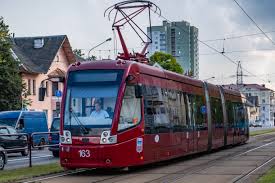
Introduction
Minsk, the capital city of Belarus, has emerged as a significant cultural and political hub in Eastern Europe. With a population of over 2 million, it represents the heart of Belarusian heritage and modern development. Understanding the dynamics of Minsk is crucial, especially in light of ongoing geopolitical tensions, economic changes, and cultural revivals that shape the nation’s identity.
Recent Developments in Minsk
Recently, Minsk has been a focal point for various events that illuminate both its domestic situation and international relations. In 2020, the city experienced significant protests following the presidential election, where Alexander Lukashenko claimed victory amidst allegations of electoral fraud. These events underscored the citizens’ discontentment and desire for democratic reform, capturing worldwide attention.
Since then, the government has implemented various measures aimed at reducing dissent and increasing control over social media and public gatherings. In 2023, a series of measures aimed at reviving the economy post-pandemic were introduced, focusing on foreign investment and tourism. The government’s efforts to bolster the economy involve promoting Minsk as a regional hub for technology and innovation, aligning it with the broader goals of the Eurasian Economic Union.
Cultural Significance
Minsk is not just a political center; it is rich in cultural heritage. Landmarks such as the National Opera and Ballet Theatre of Belarus, the Belarusian State Museum of the Great Patriotic War, and Independence Square attract thousands of visitors. The Minsk City Hall and the historic Upper Town reflect a blend of architectural styles that tell the story of the city’s evolution over centuries.
The city’s vibrant arts scene has seen a renewal in the post-Soviet era, with an increasing number of galleries, theaters, and cultural festivals that showcase local talent. The contemporary art movement in Minsk has started to gain traction, and international collaborations are becoming more commonplace, providing a creative outlet and platform for Belarusian artists.
Conclusion
Minsk is a city marked by resilience, adaptation, and cultural richness. As it navigates through the complexities of political unrest and economic transformation, the capital continues to assert itself as a vital player in Eastern Europe. While challenges remain, the future of Minsk appears promising, particularly with its growth in tourism and cultural innovation. Understanding this city offers invaluable insights into Belarus’s past, present, and potential trajectory in the global landscape.



